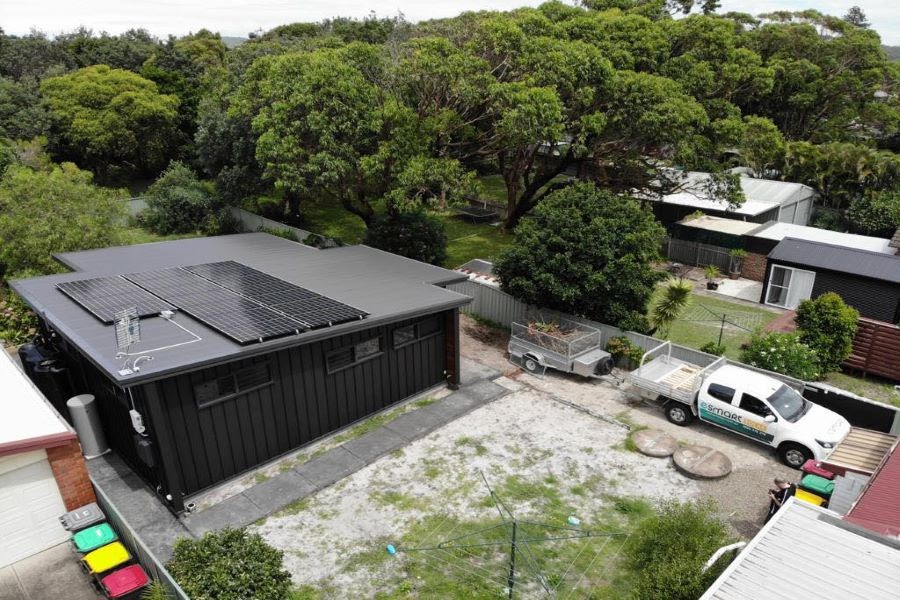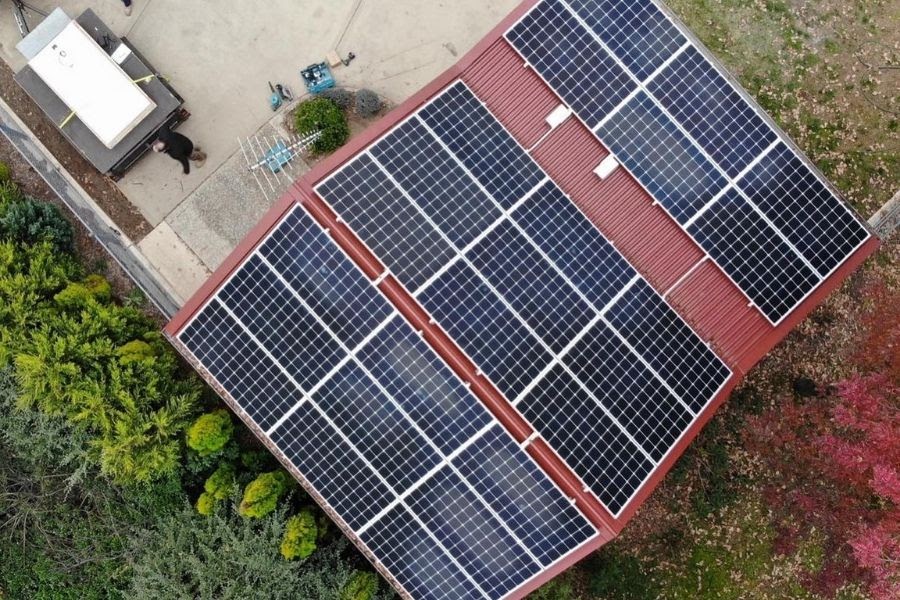There’s no doubt the 2020s will see immense growth in both smart home and solar technology. Australians with a smart home have the ability to use a more affordable and enjoyable property each day. For Australians with a solar installation there’s the chance to harness an effectively unlimited natural resource.
With a smart home and solar combo Australians can have the best of both worlds. Especially because having a smart home does not mean by default you need to have an array of gizmos and cutting-edge tech at your disposal. Instead, having a smart home and solar combo is about bringing together the best possible resources in your property, and making any improvements where you can.
Aussies who do this can build a powerful plan for the future of their home. It’s essential to understand the value in starting to make this shift now.
Tapping into Unlimited Energy
It’s no secret the cost of installing solar is something you should think carefully about. Just as is the case in a number of other countries, Australia right now has an abundance of solar installers offering rooftop systems at absolutely rock bottom prices – but this isn’t a good thing. The old adage ‘the least expensive and the most expensive product are rarely good value’ rings true.
But while doing research and thinking carefully about which solar setup is best for you is certainly wise – a poor quality installation may fail to perform properly and even be a safety risk – it’s also essential to understand the immense value a quality rooftop solar installation can provide your household by reducing power bills. Indeed, it’s no understatement to say a quality solar installation can be revolutionary for the average Aussie home in all the benefits it offers. A solar battery is also a very worthwhile consideration in this mix.
Solar panels will harvest energy, the inverter will convert it into usable energy for the home, and in solar installations with a battery present excess energy can be stored. As well as the eco-friendly benefits of a solar installation generally, one with a battery can provide an additional level of energy security to the home. In the case of a blackout, it’s possible for a home to make use of the energy stored in a battery when power is not available from the local grid.
You can view our range of recommended inverters, and solar batteries here.
If unable to commit to a rooftop solar installation right now, but looking to make a small but significant change in the home? It can be done by simply swapping in some LED lights. In comparison to halogen bulbs, LED lights use around 75% less energy. This can amount to savings of hundreds of dollars per year.
Heating, Ventilation, Air Conditioning
Heating, ventilation, air conditioning (HVAC) can be a massive expense on the household budget. In fact, according to the Australian government, it can account for up to 50% of energy used in Australian homes. Of course, there are sensible steps all of us can take to help drive down these costs. Good habits such as turning off heating and cooling units when not in use, and buying thermals or wearing an additional layer of clothes in winter are key examples of this. But technology also has a role to play here.
A reverse cycle split system air conditioner is the most energy efficient electric heater. Not only do they outpace the competition in their own class, but they can also be cheaper to run than the old and familiar gas heater. They already provide affordable heating in winter and cooling in summer, and when combined with a solar installation their cost of operation drops further still. Furthermore, data by the Australia Bureau of Statistics has shown up to 45% can be saved on heating and cooling energy consumption when roof and ceiling insulation is present. Insulation can help keep a home warmer in winter and cooler in summer.
Solar and Water Efficiency
The effective combination of solar and water is essential to getting the most out of a smart home and solar combo. Similar to what a traditional water tank looks like, a solar hot water unit may be ground-mounted and still derive the benefits of a rooftop solar installation. A solar hot water system can store any excess energy a solar installation has, and – instead of it getting sent back to the grid – see it put to use in heating the water necessary for daily activities in the home.
Alongside solar hot water systems, heat pumps can serve a similar purpose as an alternative. Their method of operation is different – as a heat pump can achieve its aim via the harvesting of energy from the surrounding air which is then transferred internally for use to heat the water – but a heat pump can be ideal for homes where structural challenges such as limited space may prohibit a solar hot water system from being set up.
A Wise Move with Windows
Many Aussies looking outside a window in their home for a smart upgrade to make really don’t need to look far. In fact, windows themselves can form a key part of a smart home and solar strategy. By getting window glazing done the cooling and heating capabilities of a home can be enhanced. Whether double glazing or triple glazing, this process can help keep heat in the home during winter, and see a significant reduction in the cost of heating bills once they’re in place. Window blinds – aka roller shutters – are also a good option in this area.
Similarly, external awnings and shadings that encircle the house can help keep the home cooler in summer, reducing the need to use air conditioning and fans. Ideally, any addition to the home’s structure like shadings – or any new home build! – will be done mindful of the optimal home orientation. In the Southern Hemisphere, north-facing homes will receive more exposure to the sun than any other facing. Where possible, factoring in this geography will always yield the best results for a smart home and solar combo.
However, for any Aussie home presently not in a position to pursue a big piece of work like a glazing treatment or shading installation, you can still make a smart upgrade quite easily. Installing heavy curtains can help reduce heat loss in winter, and keep the home cooler in summer.
Making Smart Work of the Yard
Utilising a smart home and solar combo effectively isn’t just about what goes on inside the four walls of the home.
For anyone that’s a real green thumb and happiest starting their smart home journey outside the home, landscaping and vertical gardens can be a terrific way to make the property more eco-friendly and drive down energy costs. Examples of this are planting trees in the garden that can cast additional shade over the home in summer helping keep it cool, and the creation of a green wall along the home’s walls that creates an extra layer of insulation.
Rainwater tanks are also a tremendous way to enhance your yard’s eco-friendly nature while reducing water costs. As well as the big and traditional bulky tanks, a number of thin tanks are also available on the market for any home that requires a unit with a slim profile. And speaking of water, for any Aussie looking to trim down operating costs on the family pool the installation of a pool heater can be especially helpful. These devices can have a similar upfront cost to other options like a gas pool heater but also have very low annual operating costs.
For those who may not have the funds or space at present to insert some big new additions to their yard, putting out a few buckets in the rain can be an affordable and easy way to take a smart approach to water use. Sure a few buckets won’t catch as much as a tank, but it all adds up. The rain water can be used in the days following for watering the garden, outdoor cleaning, and similar tasks.
The Importance of Stargazing
There’s always lots to consider when buying home appliances. The ideal cost, style, and features will vary from one product to the next depending on the particular needs of a home. Yet what all buyers will find in common is the benefit they can gain from seeking out electrical appliances with high energy efficiency ratings. The more stars an appliance has, the more energy efficient it is. Choosing an energy efficient appliance can really be a smart move, given it can result in a lot of money saved in the long run due to reduced energy consumption in daily use.
If your current devices are not very energy-friendly and you’re not in the market for some new appliances right now, there are still ways to reduce your consumption. Alongside building the habit of switching appliances off when not using them, you can optimise their use by understanding what techniques save power. For example, by filling a fridge sufficiently.
When a fridge is only partially filled it expends a lot of energy replacing the cold air that leaves every time someone opens the door. While you should steer clear of overfilling, keeping the fridge around two-thirds full can help minimise its operating costs as less cool air will escape each time the door opens.
Similarly, always using a washing machine on a full load is best. Common sense applies here – as you also want to avoid overfilling this machine too! – but unless your machine has a special sensor where it can detect you’re running less than a full load, always fill it to capacity. Also, washing on cold water can drive down costs, and so too unplugging the machine when not in use (many machines have a standby mode so they continue to use energy even when not operating).
A Fantastic Way to Future-Proof Your Home
Operating a smart home with power drawn from a rooftop solar installation feels very futuristic – and that’s because it is! But although the smart home and solar combo is in one respect on the absolute cutting-edge, it’s also set to become the ‘new normal’ in years ahead. This is because of the clear-cut advantages it can provide a household in dealing with emerging challenges.
By building a smart home and solar combo and utilising associated apps and online channels, it’s possible to monitor your home’s consumption over time and identify where further optimisations can be made, and inefficiencies reduced. This is a great way to counter the trend of the rising cost of living and do it all from the comfort of your own home with smart tech and data as your tools.
Being Smart About It
Building a smart home and solar combo is an outstanding way for an Aussie household to optimise their daily lives, and reduce the cost of living expenses. This alongside the great contribution of eco-friendly smart home products in combination with a solar installation makes to drive Australia towards a cleaner and greener future.
For any household that right now has the opportunity to begin building (or adding) to their own smart home and solar combo, there’s never been a better time to do so. Contact E-Smart Solar now to take advantage of the opportunities on offer that a smart home and solar combo provides immediately, while also utilising it to drive down living costs as they rise elsewhere in future. We only use the highest quality and the safest products from reliable solar manufacturers in all of our installations.







